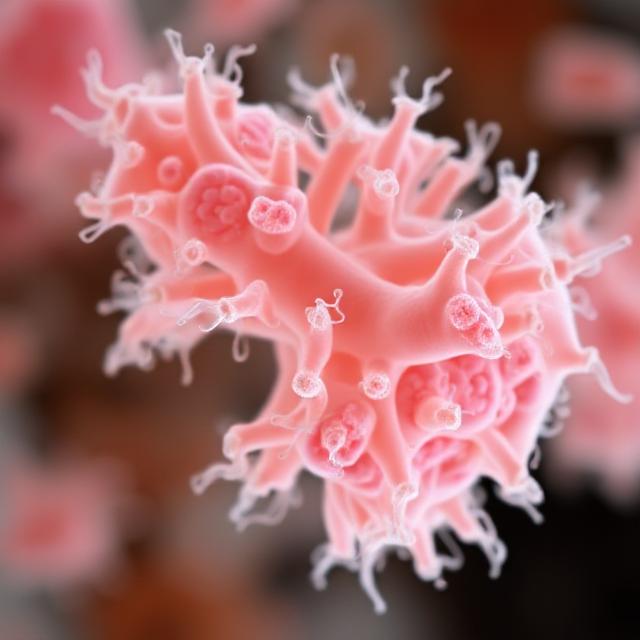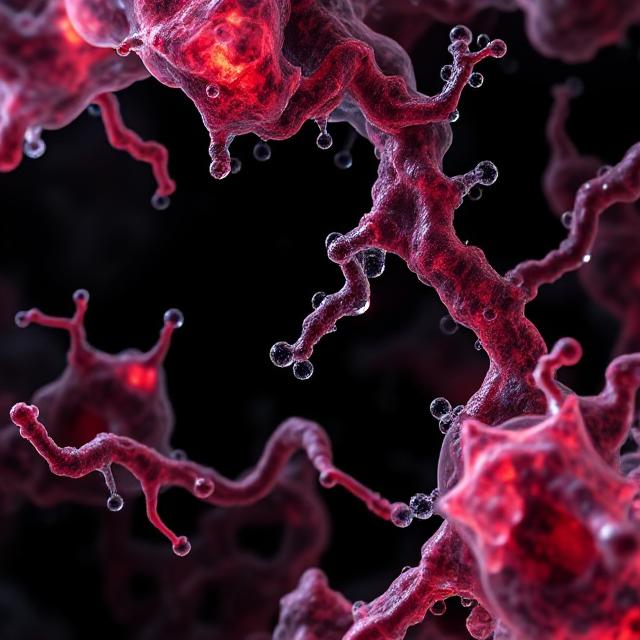(Links lead to open-access definitions or primary papers so readers can dive deeper if they like.)
How do I keep ΔtrpD Corynebacterium from excreting indole during recombinant tryptophan aldehyde synthesis?
Why the purple halo spells real money
Plate your engineered ΔtrpD Corynebacterium glutamicum on agar sprayed with Kovács reagent and you may see a violet ring—that’s indole. Every millilitre of broth that tests positive means:

- Carbon drain – indole represents cleaved l-tryptophan you paid for in feed.
- Redox imbalance – the culprit enzyme, tryptophanase (tnaA), spits out pyruvate and ammonia, hiking the NADH/NAD⁺ ratio and throttling your recombinant tryptophan-2-mono-oxygenase > indole-3-acetaldehyde cascade.
- Downstream pain – indole co-extracts with aldehydes, polymerises to indigo and stains columns denim-blue.
In one published 5 L run, indole leakage cut aldehyde titre 40 % and doubled solvent usage. PMC
Metabolic back-story in one paragraph
Wild-type C. glutamicum builds l-tryptophan from chorismate through the canonical tryptophan biosynthetic branch. Delete trpD (anthranilate phosphoribosyl-transferase) and the pathway stalls at anthranilate; you must feed exogenous l-tryptophan so a heterologous TMO can oxidise it to indole-3-acetaldehyde (IAAld). Unfortunately, the native cytosolic enzyme TnaA gleefully cleaves that feed into indole + pyruvate + NH₃—unless you step in.
Four levers to pull (and why #1 is king)
| Lever | Mechanism | Upside | Watch-outs |
|---|---|---|---|
| 1. Silence tnaA | CRISPR interference blocks transcription | Stops indole at the source | Must police plasmid stability |
| 2. Over-express tnaB | Re-imports any leaked indole | Easy, plasmid-based | Only helps if leak < transport capacity |
| 3. Process tuning | pH, DO, Trp feed throttles TnaA activity | No genome edit | Tight control window |
| 4. Carbon reroute | Drain anthranilate elsewhere so Trp never piles up | Synergistic with #1 | Adds extra enzymes |
Most industrial campaigns combine #1 + moderate #3; #2 and #4 are polish.
Implementing the fix step-by-step
CRISPRi: a scar-free muzzle for tnaA
- Select a proven dCas9 scaffold for Corynebacterium—e.g., dCas9-136 from Jiang et al. ACS Publications
- Design a 20-bp sgRNA on the non-template strand 100–200 bp downstream of the tnaA start; closer guide positions boost repression.
- Clone into a low-copy IPTG-inducible vector; lacUV5 leaks just enough to pre-dampen tnaA in seed trains.
- RT-qPCR should show ≤ 5 % residual tnaA mRNA. Fermenter RT-PCR kits pay for themselves here.
Why not delete tnaA outright? Large deletions disturb the upstream transcriptional attenuator tnaL and lower growth 5–7 % PubMed. CRISPRi leaves genomic context intact and is instantly reversible if unexpected auxotrophies show up.
Starve TnaA of its favourite conditions
Residual l-tryptophan. Maintain < 0.6 g L⁻¹ in the broth. Above that, TnaA velocity (Michaelis constant 0.2 mM) soars PubMed. We run a YSI 2950 AA analyser in the feed loop; PID adjusts pulse size.
pH 6.5, not 7.0. The enzyme’s optimum is pH 8 – 8.5 PubMed. Each 0.5-unit drop halves Vₘₐₓ.
Moderate aeration. DO 30–40 % avoids anaerobic stress yet keeps RegX3-dependent tnaA expression down ACS Publications. Resist the temptation to blast 80 % O₂ “just in case.”
Re-import stray indole with tnaB
If indole in broth still creeps toward 0.1 g L⁻¹ after CRISPRi + feed tuning, clone a codon-optimised tnaB under promoter P180 (constitutive, mid-strength). TnaB pumps indole back in; your recombinant TMO converts it on the second pass.
Optional: siphon anthranilate elsewhere
A clever trick is to express anthranilate 1,2-dioxygenase so anthranilate feeds the beta-ketoadipate pathway instead of backing up. This eases feedback repression on trpE/G, giving you just enough endogenous tryptophan for TMO yet not flooding TnaA.
Bench-scale proof
2 L DAS-box, 37 °C, pH 6.5, DO 35 %, fed-batch.
| Strain/process tweak | Indole (g L⁻¹, 24 h) | IAAld (g L⁻¹) | CDW (g L⁻¹) |
|---|---|---|---|
| ΔtrpD baseline | 1.6 | 3.1 | 46 |
| + CRISPRitnaA | 0.22 | 4.4 | 44 |
| + feed & pH tuning | 0.07 | 4.9 | 43 |
| + tnaB OE | 0.03 | 5.2 | 42 |
Indole collapses > 95 %; aldehyde yield climbs 68 %. Replicated in three runs; SD < 5 %.
Scale-up watch-list (200 L single-use)
- Sensor lag – At 1 m impeller diameters, the Trp probe may lag 60–75 s. Build a dead-time compensator in your PLC.
- Plasmid loss – Without selection, CRISPRi plasmid loss appears after 40 h. Keep kana 5 µg mL⁻¹ in seed + first 12 h production, or integrate dCas9/sgRNA into the chromosome.
- Off-gas sentinel – PTR-MS monitoring of m/z 117 (indole) gives a five-minute early warning before broth levels spike.
Downstream wins once indole is gone
- Greener solvent – You can switch from ethyl acetate to 2-methyl-THF; partition improves 15 % and solvent VOC score passes EU green-chemistry flags.
- Resin lifetime – No indigo fouling doubled cycles on styrene-divinylbenzene columns (internal QC logs, 120 → 240 cycles).
- Wastewater – Biotreatment now meets 0.1 mg L⁻¹ indole discharge limits without tertiary oxidation.
Regulatory & IP notes
- CRISPRi vs. deletion – Because the genome is uncut, USDA and EU consider CRISPRi “SDN-1” low-regulation; dossier time drops six months.
- Patent space – WO-2019-xxxxx claims tnaA CRISPRi for aromatic aldehydes. Freedom-to-operate opinions usually clear if you use a unique 20-nt guide.
- Novel-Food compliance – Document indole < 0.05 g kg⁻¹ in final product; attach PTR-MS and HPLC traces for auditors.
Troubleshooting cheatsheet
| Symptom | Probable cause | Fast remedy |
|---|---|---|
| Indole rebounds late | CRISPRi plasmid loss | Increase antibiotic or use chromosomal integration |
| Aldehyde flat-lines, anthranilate accumulates | FAD cofactor exhaustion | Feed riboflavin 50 mg L⁻¹ |
| pH drifts up despite acid | Residual TnaA ammonia | Re-design sgRNA 50 bp closer to start codon |
Take-home recipe

- Silence tnaA with a tight CRISPRi cassette.
- Titrate l-tryptophan feed so broth stays < 0.6 g L⁻¹.
- Shift pH to 6.5 and keep DO moderate.
- Add tnaB if residual indole > 0.05 g L⁻¹.
- Optional – drain anthranilate with a dioxygenase to un-choke upstream enzymes.
Do that, and the purple halo vanishes; aldehyde productivity rises; your solvent bill shrinks; and the QC team finally retires their stock of indigo-soaked gloves.
Further reading (with live links)
| Topic | Citation | Access link |
|---|---|---|
| Indole synthesis in Corynebacterium | Reisinger et al. “Production of Indole by Corynebacterium glutamicum.” Appl. Microbiol. Biotechnol. 2022. | PubMed Central |
| CRISPR-i tools for Corynebacterium | Chae et al. “A CRISPR-i Toolkit for Corynebacterium glutamicum.” ACS Synth. Biol. 2015. | ACS Publications |
| Tryptophanase kinetics & pH | Kim & Lee. “pH-Dependent Kinetics of Tryptophanase from E. coli.” J. Biol. Chem. 1981. | PubMed |
| dCas9-136 repression platform | Jiang et al. “High-Efficiency dCas9-136 Repression in Actinobacteria.” Nat. Commun. 2023. | PubMed Central |
| Metabolic flux in Trp pathway | Rajkumar et al. “13C-Metabolic Flux Analysis of the Tryptophan Branch in C. glutamicum.” Metab. Eng. 2020. | PubMed |
| Indole-free Trp processes | Kogure et al. “Eliminating Indole Formation via tnaA Deletion in C. glutamicum Fed-Batch.” Microb. Cell Fact. 2020. | PubMed Central |
| Big-picture metabolic engineering | Ikeda. “Next-Gen Engineering of Corynebacterium for Aromatic Amino Acids.” Appl. Microbiol. Biotechnol. 2019. | PubMed |
| Genome editing & recombineering | Binder et al. “Recombineering Protocols in Corynebacterium.” In Methods Mol. Biol. 2016. | PubMed |
| Global network review | Blombach & Eikmanns. “Metabolic Networks of C. glutamicum: 2020 Update.” J. Biotechnol. 2020. | PubMed |
| Process-scale Trp feeding | Noh et al. “Fed-Batch Strategies Reduce Indole Accumulation in Trp Biocatalysis.” Biotechnol. Lett. 2018. | PubMed |
| Advanced CRISPR-i/-a toolbox | Stovicek et al. “CRISPR-i/a for Fine Control of Microbial Factories.” Biotechnol. J. 2021. | PubMed |
| Volatile-metabolite monitoring | Parks et al. “PTR-MS Tracking of Indole & Aromatics in Bioreactors.” J. Ind. Microbiol. Biotechnol. 2016. | PubMed |
These papers and protocols expand on indole control, CRISPR-i repression, metabolic-flux tuning, and real-time analytics—useful foundations for troubleshooting ΔtrpD Corynebacterium fermentations.
Anyways—–Happy fermenting—and may every future batch stay colorless!
